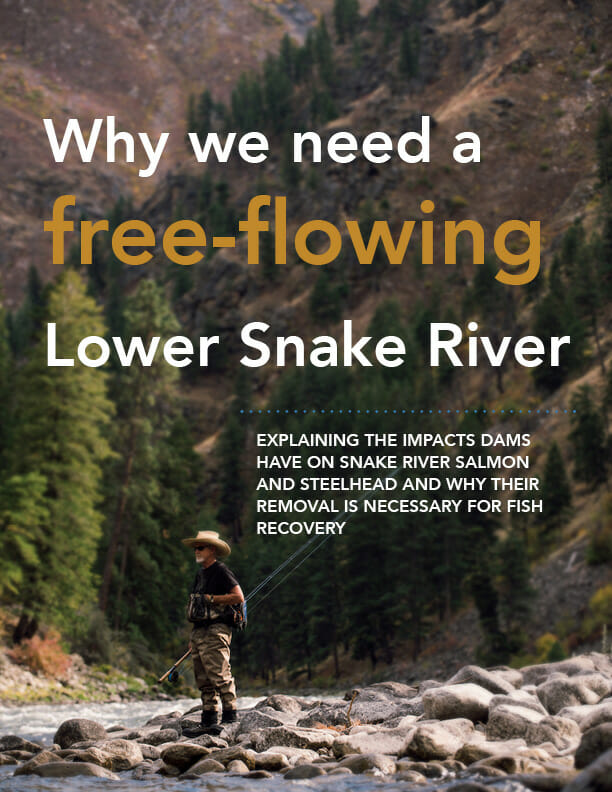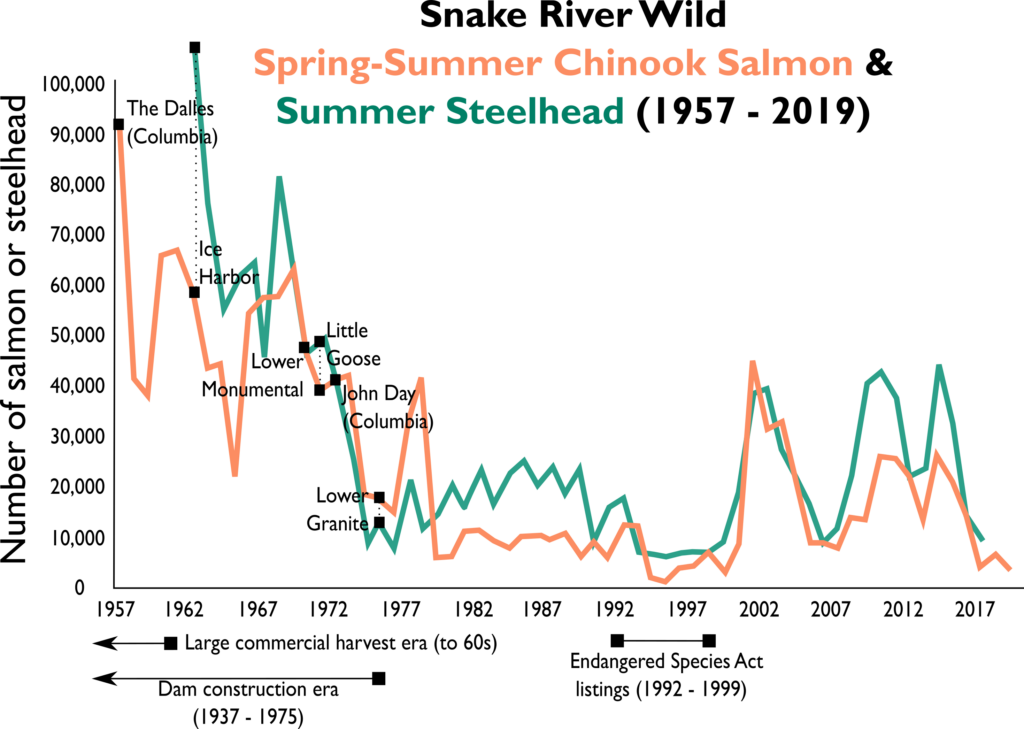
Last week TU held a webinar on our recently published report, “Why we need a free-flowing lower Snake River,” which lays out the overwhelming evidence of why we need to remove the four lower Snake River dams to rebuild abundant, healthy wild salmon and steelhead populations and provide consistent fishing opportunity.
In response, we heard from some folks that they are concerned that our report signals that TU is shifting away from a collaborative approach to recovering Snake River salmon and steelhead. The answer to that question is emphatically “no.”
TU’s position that dam removal is necessary is entirely consistent with our demonstrated commitment to collaborative problem solving. Our position relates to the question of what must be done. Our commitment to collaboration relates to the question of how it should be done.
TU is committed to using the best available science and information to inform our positions. As we explain in our report, the scientific research, data and rock-solid ecological and biological principles establish the need for a free-flowing lower Snake. That conclusion and the information supporting it exists independent of any person’s opinion regarding lower Snake River dam removal.
As our actions clearly demonstrate, we walk our talk when it comes to collaboration. TU is fully engaged in Gov. Little’s Salmon Workgroup in Idaho, the regional Columbia Basin Partnership, and in discussions with public power leaders about how to meet the region’s energy needs while restoring salmon and steelhead. We don’t insist that our partners in those collaborative forums take a position in favor of removing the four lower Snake River dams as the price of engagement, and they should not expect us to abandon our evidence-based position to get a seat at the table.
To collaborate in good faith does not require backing away from a controversial position, but rather a sincere openness to considering new information and new ideas that could change a position. TU has consistently stated its willingness to consider actions other than restoring a free-flowing lower Snake River to achieve abundant, healthy, fishable salmon and steelhead populations. To date, no such actions have been identified despite close to 30 years of recovery efforts and billions of dollars spent.

Meanwhile Snake River salmon and steelhead slip closer to extinction. And there is an enormous chasm separating current low wild salmon and steelhead abundance in the Snake and the abundance needed to meet the goal of healthy, harvestable/fishable wild populations — roughly five to six times current abundance.
In the absence of credible recovery alternatives, collaboration should be focused on how to restore a free-flowing lower Snake River while replacing the dams’ benefits through other means. But there is no reason to stop there — we should identify and collectively champion investments in our energy, transportation and water supply infrastructure that better serve our collective interests and needs in the 21st Century.
That is the opportunity before us ready to be seized.
Rob Masonis is TU’s vice president of western conservation.


